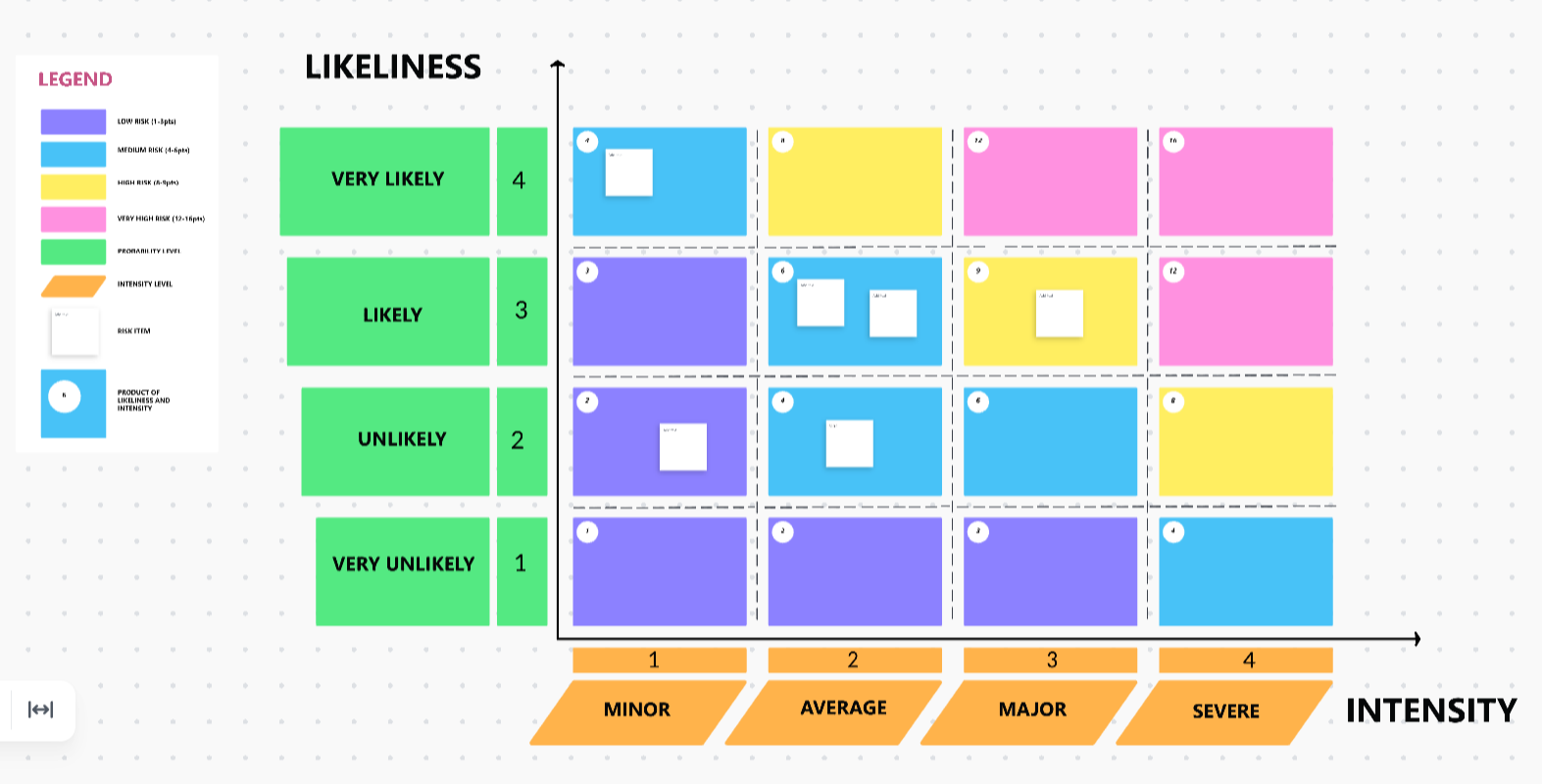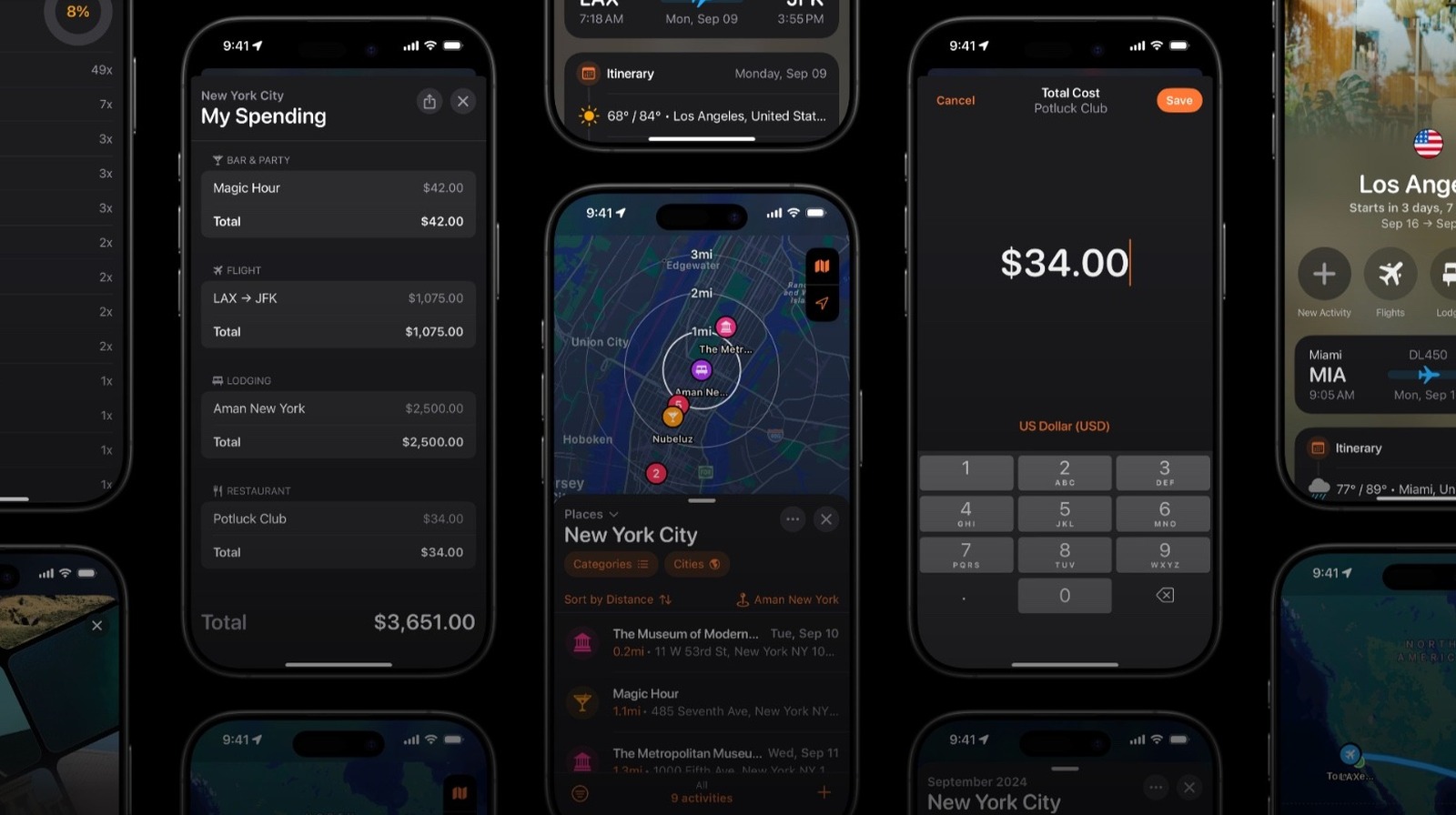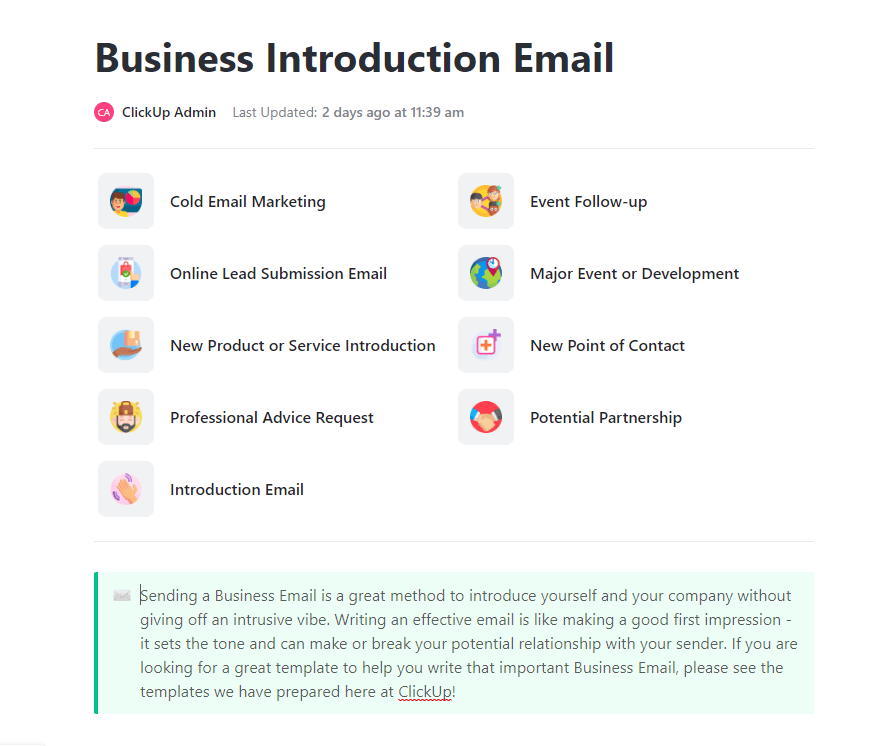Working with third-party vendors comes with its fair share of risks, from data breaches to compliance violations. That’s why a thorough vendor risk assessment isn’t just a checkbox—it’s essential. Whether you’re onboarding a new supplier or reviewing existing partnerships, having the right vendor risk assessment template can streamline the process and help you identify potential issues before they escalate.
In this blog, we’ve rounded up free vendor risk assessment templates you can start using right away to protect your business and build secure, compliant partnerships.
Free Vendor Risk Assessment Template for Secure Partnerships
What are Vendor Risk Assessment Templates?
Vendor risk assessment templates are handy frameworks designed to strengthen your risk management efforts. They help reduce the risks vendors might pose to your business, from cybersecurity threats to operational disruptions. Using them lets you get ahead of issues before they cause real damage.
These templates offer a quick way to prevent cyberattacks and eliminate vulnerabilities like regulatory non-compliance, financial losses, or data security gaps.
10 Vendor Risk Assessment Templates
Want to keep your sensitive data safe and make smarter vendor decisions? Start with a solid risk assessment process and monitor your vendors continuously. It’s not just about security—tracking performance and pricing can also uncover cost-saving opportunities and boost your ROI.
A structured vendor management process gives you more control over costs and more substantial leverage when negotiating contracts. And the best part? You don’t have to start from scratch.
With , the everything app for work, your vendor risk assessment templates can live directly where the rest of your work is. Check out these free, ready-to-use third-party risk assessment templates to tighten security, stay compliant, and keep your business running smoothly!
1. The Risk Assessment Whiteboard Template
Unlike basic list-based templates, the Risk Assessment Whiteboard Template lets you map potential weaknesses in a team. The visually rich template is ideal for early-stage risk identification and can be worked on collaboratively with your teams. It’s also a helpful first step in understanding and categorizing risks introduced by third-party vendors.
With this template, you can:
- Establish a risk-rating system to focus on the most critical vendor issues first
- Set up recurring tasks and progress tracking to monitor risk management efforts over time
- Track risk resolution progress by updating status markers directly on the whiteboard
🔑 Ideal for: Brainstorming and mapping out potential project and vendor risks in a collaborative, visual format.
👀 Did You Know? In the next few years, global spending on risk management and information security will exceed $310 billion.
2. The Risk Analysis Whiteboard Template
The Risk Analysis Whiteboard Template shifts your focus from general assessment to deeper analysis by beginning to quantify and qualify risks. It allows for mind-mapping techniques, making it an excellent tool for breaking down complex risk scenarios.
This template can help you:
- Compare mitigation strategies by mapping potential solutions to identified risks
- Quantify the financial impact of potential cyber threats for budget planning
- Develop detailed mitigation strategies for high-probability risks identified during initial assessments
- Model the potential consequences of various environmental risks on business operations
🔑 Ideal for: Risk analysts, IT security teams, business continuity planners, and leadership teams conducting in-depth risk evaluations and building out clear, actionable mitigation plans.
👀 Did You Know? In the event of a security breach, 60% of ransom demands are $1 million or more, and 30% are $5 million or higher.
3. The Value Risk Matrix Template
The Value Risk Matrix Template makes it easier to balance risk and reward.
Instead of just checking boxes like in a traditional risk analysis, it helps your team focus on which risks really matter based on their impact. That way, you can make more intelligent, more strategic decisions without getting bogged down in the details—especially when evaluating third-party vendors.
Use this template to:
- Justify resource allocation decisions with a structured risk-value comparison
- Select investment opportunities by comparing potential returns against market volatility risks
- Choose between different vendor options by considering the value of their services against their security risks
🔑 Ideal for: Prioritizing risks—including those from vendors—based on their impact and value trade-offs to guide strategic decision-making.
4. The Assumption Grid Template
The Assumption Grid Template is about pressure-testing your assumptions before they become real risks. Instead of simply flagging risks after the fact, it helps you step back and ask, “Are we sure about this?”
It sorts assumptions by how certain they are and how much they could impact your project—so you can validate what matters before moving forward. This includes vendor-related assumptions that could impact partnerships or long-term performance.
Access this template to:
- Evaluate the reliability of market research data by scrutinizing its underlying assumptions
- Test the validity of projected cost savings by examining the assumptions behind efficiency improvements
- Analyze the assumptions behind competitor strategies to anticipate their next moves
🔑 Ideal for: Validating critical project assumptions—including vendor assumptions—before major launches or funding requests.
👀 Did You Know? Cyber risk assessments are essential for monitoring threats and strengthening incident response, but they’re not always easy to conduct. In fact, 41% of professionals say lack of time is the biggest hurdle to conducting these assessments, while 38% point to insufficient personnel.
5. The Risk Register Template
A structured, documentation-heavy tool, the Risk Register Template is an ongoing log of identified risks throughout a project’s lifecycle. It provides a detailed record of risks, their assigned owners, mitigation strategies, and status updates in a centralized space.
With this template, you can:
- Improve audit readiness with a structured and detailed risk-tracking system
- Document lessons learned from past risk events to improve future risk management practices
- Monitor the effectiveness of risk control measures and make adjustments as needed
🔑 Ideal for: Project managers, compliance teams, and risk officers who need to maintain a clear, ongoing record of risks, their mitigation efforts, and status for long-term tracking and accountability.
6. The Project Management Risk Analysis Template
Built for your day-to-day workflow, the Project Management Risk Analysis Template helps teams track project-related vendor risks in real time.
You can flag issues as they arise, assign tasks to tackle them, and keep everything moving without jumping between tools. This keeps risk management right where your team works.
Cybersecurity project management teams can:
- Ensure project quality by addressing risks related to technical specifications and testing
- Track potential risks associated with project dependencies and manage their impact
- Develop contingency plans for security incidents and unforeseen events that could disrupt project progress
🔑 Ideal for: Cybersecurity project leads, PMOs, and IT teams who need to proactively manage project-specific risks to protect timelines, budgets, and deliverables.
7. The Risk Benefit Analysis Template
Need to make a tough call? The Risk Benefit Analysis Template helps you weigh the good and the bad—literally. Assign numerical values to both the risks and the benefits of a decision, and calculate a clear risk-benefit ratio. It’s smart to cut through the noise and move forward with your vendor decisions confidently.
With this template, you can:
- Choose between different operational strategies by weighing the benefits of efficiency improvements against potential risks
- Justify the implementation of new security measures by demonstrating their cost-effectiveness
- Determine the optimal level of investment in risk mitigation based on the potential cost of risk events
🔑 Ideal for: Procurement teams, CISOs, finance departments, and decision-makers weighing trade-offs between business risk and return across projects or partnerships.
🧠 Fun Fact: 84% of businesses and 83% of charities have reported phishing instances, making it the most common type of cyberattack.
8. The Open Issues List Template
Think of the Open Issues List Template as your digital board for tracking project issues. Log what’s pending, prioritize what matters most, and collaborate to knock things off the list in real time. It’s all about keeping your team focused on solving problems, without letting anything slip through the cracks.
And when it comes to vendor risk assessment? This template helps you stay on top of open security concerns, unresolved audit findings, or vendor performance gaps that could impact business continuity.
Here’s how this template can help you:
- Track action items from team meetings and ensure timely follow-up
- Organize and prioritize outstanding action items from audit findings
- Assign responsibilities to team members for efficient issue resolution
🔑 Ideal for: Keeping track of unresolved project and vendor issues to ensure timely resolution, accountability, and smoother third-party risk management.
📮 Insight: Low-performing teams are 4 times more likely to juggle 15+ tools, while high-performing teams maintain efficiency by limiting their toolkit to 9 or fewer platforms. But how about using one platform? As the everything app for work, brings your tasks, projects, docs, wikis, chat, and calls under a single platform, complete with AI-powered workflows. Ready to work smarter? works for every team, makes work visible, and allows you to focus on what matters while AI handles the rest.
9. The Issue Tracker List Template
Whether in software development or just squashing bugs, the Issue Tracker List Template has your back. It makes reporting, assigning, and resolving issues simple and streamlined—so nothing gets lost, and your team can deliver with quality and speed.
Beyond internal fixes, this template is also useful for tracking vendor-related security incidents, delayed responses, or misaligned service-level agreements. It helps teams stay accountable while strengthening your vendor risk management framework.
Teams can use this incident management software template to:
- Automate issue-tracking workflows to reduce manual effort
- Analyze issue patterns to identify recurring problems and implement long-term fixes
- Manage technical support requests from internal teams and track their resolution
🔑 Ideal for: Systematically managing and resolving software bugs, vendor incidents, and technical support issues.
10. Operations Vendor Risk Assessment by Template.net
If vendors play a big role in your operations, the Operations Vendor Risk Assessment Template by Template.net helps you dig into the details without feeling buried in paperwork.
This vendor risk management questionnaire walks you through compliance, financial stability, operational performance, and even business continuity risks—so you can spot vulnerabilities early and build more secure, dependable vendor relationships.
IT professionals can use this template to:
- Support procurement teams with a data-driven approach to selecting and retaining vendors based on risk assessments and long-term reliability
- Conduct financial health checks to prevent reliance on vendors facing instability, ensuring they can meet long-term contractual obligations
- Conduct thorough due diligence on potential vendors before entering into contractual agreements
🔑 Ideal for: Conducting in-depth vendor due diligence to mitigate organizational, operational, and financial risks through structured risk assessment practices.
What Makes a Good Vendor Risk Assessment Template?
The best vendor risk assessment questionnaires use consistent, repeatable security practices to assess third-party vendors effectively. They help uncover potential risks, reduce blind spots, and support a stronger vendor risk management program. With the right tools in place, you can make confident, informed decisions throughout the entire vendor lifecycle.
A compatible vendor risk assessment template will cover all these critical risk areas while ensuring ease of use for decision-makers. Here are five characteristics you should specifically look out for:
- Assess the vendor’s security posture: Establish clear risk tolerance thresholds and categorize the vendor’s risk profile to see if they align with your vendor’s security practices
- Define key risk categories: Organize risks into structured categories such as financial, operational, compliance, and reputational risks to ensure a comprehensive evaluation
- Integrate risk scoring and prioritization: Implement a risk rating system to quantify risk levels, helping businesses focus on the most critical vendor risks
- Include contingency plans: Outline steps to address potential security vulnerabilities, such as requiring vendors to undergo periodic security audits
- Understand their data security practices: Verify how the vendor stores, processes, and transmits sensitive information, ensuring encryption and access controls
💡 Pro Tip: Before sending out your vendor risk questionnaire, complete it yourself, as if you were the vendor. It’ll reveal blind spots in your own process and help you frame sharper, more relevant questions.
Optimize Third-Party Risk Management with
Solid IT vendor management means a long-term business relationship. It helps you spot and mitigate everything from compliance gaps and cybersecurity threats to financial and operational risks.
Sure, building a vendor risk management process from scratch can take hours. But ’s templates let you skip the heavy lifting and get straight to assessing, tracking, and managing vendor risks without the chaos.
Whether you’re reviewing security policies, monitoring service level agreements, or diving into due diligence, these templates keep your vendor risk assessment process efficient and headache-free.
Sign up for for free and bring clarity (and sanity) to your risk and project management.


Everything you need to stay organized and get work done.





















